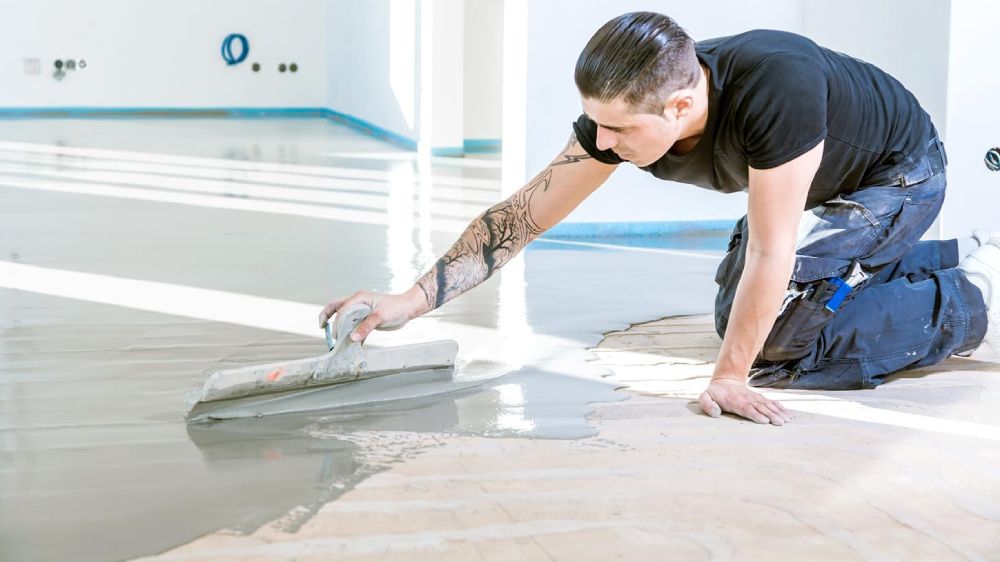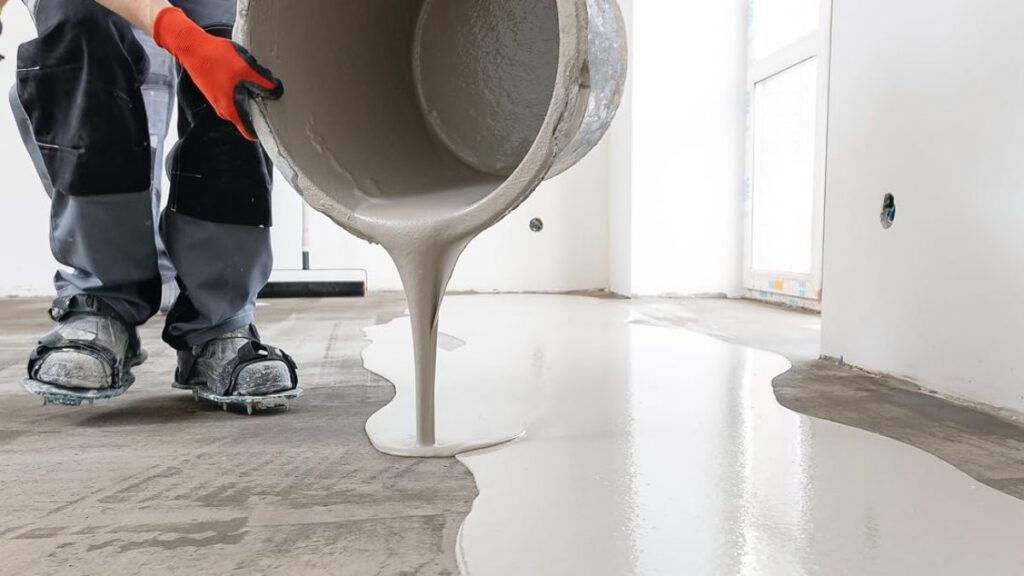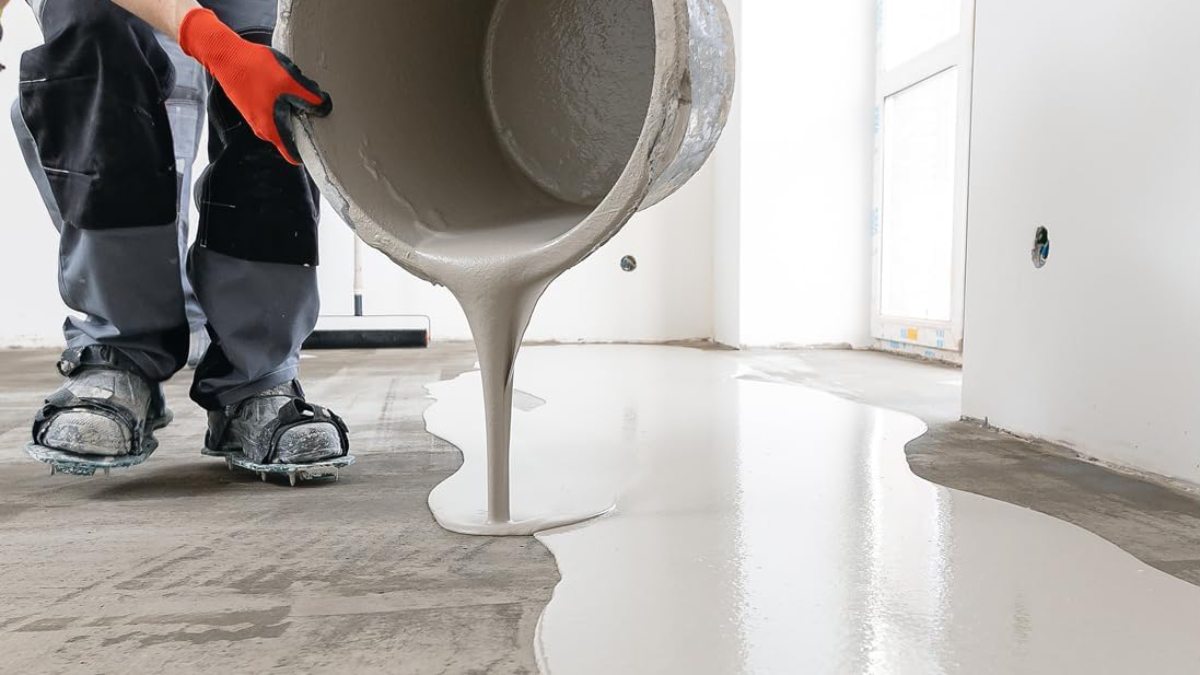Self-leveling compounds are widely used in floor leveling projects to create a smooth and level surface before adding new flooring. Although this material is convenient and efficient, it can cause some challenges during the floor leveling process. Therefore, it is essential to know the potential self-leveling compounds issue and learn how to resolve them. Correct material selection, surface preparation, and application techniques play important roles in the floor leveling projects. In this article, you will read more about common issues that may happen when using self-leveling compounds.
1. Poor adhesion of self-leveling compound to surface
The first common issue that may happen when using self-leveling compounds is the poor adhesion of the material to the surface. This will lead to peeling, lifting, or delamination of the self-leveling compound. If the surface is not properly prepared and cleaned, bonding failure can happen. In addition, weak adhesion can affect the durability of the flooring which will result in uneven floor leveling.
To resolve this issue, you need to first make sure that the surface is completely clean and there is no dust. Additionally, you can use a high-quality primer to improve the adhesion and let it dry based on the product’s instructions. Sanding or grinding the surface can also improve the bonding which ensures the long-lasting and strong self-leveling compound application in flooring projects.
2. Cracking in self-leveling compound after drying
Another issue that may happen after applying self-leveling compounds is cracking. It can happen due to several reasons such as the thick layer of the compound, fast drying, or movement on the surface. Additionally, uneven application of self-leveling compounds and making a poor mixture can also result in cracks and failed floor leveling.
To resolve this issue, apply a thin layer of self-leveling compounds on the surface and follow the drying time instructions. Try to use fiber-enhanced self-leveling compounds for more durability and apply a curing agent to slow down the drying process, minimize shrinkage, and prevent the risk of cracks in self-leveling compounds.

3. Uneven or wavy self-leveling compound surface
The next possible issue that has almost the same reasons as the previous one is uneven or wavy results in surfaces with self-leveling compounds. Not proper application of the compound, wrong mixture, and rush in applying the mixture can lead to an uneven and wavy surface. External reasons such as airflow or temperature changes can also affect the floor leveling process and cause failures in the whole project.
To resolve this issue, use a gauge rake to spread the self-leveling compound mixture on the surface evenly. It is important to avoid excessive troweling of the materials as it can also cause inconsistencies. Furthermore, try to keep the room temperature stable to achieve a smooth and even floor leveling finish.
4. Bubbles and pinholes in self-leveling compound surface
Bubbles and pinholes in a self-leveling compound surface are caused because of air trapping in the mixture. This happens when mixing materials for a long time, pouring them rapidly, or the surface is moist, which can create bubbles in the self-leveling compounds.
To resolve this issue, first follow the recommended speed for mixing the self-leveling compound from the instructions to avoid trapping air in the mixture. After mixing it, pour the material slowly on the surface to minimize the risk of pinholes in the results. At the end use a spiked roller immediately after pouring the compound mixture to remove trapped bubbles.

5. Self-leveling compound failure to set properly
Another issue that may happen by self-leveling compounds is the soft texture of the mixture. It happens when the ratio of water and other materials is incorrect or there are specific environmental conditions. Using too much water to make the self-leveling compound mixture makes it soft and weak and it cannot get dried easily. Furthermore, the humid or cold weather conditions can slow down the curing process which leads to a floor leveling failure.
To resolve this issue, you need to follow the mixture instructions carefully to avoid excess water being added. If you are going to level floors in a humid or cold environment, try to use a suitable air conditioner, heater, or dehumidifier (for humid places) to accelerate the drying process.
6. Self-leveling compound delamination or peeling
Delamination happens when the self-leveling compound separates from the surface as a result of movements, moisture, or improper bonding. Additionally, weak adhesion between layers can cause peeling, specifically in high-traffic places. These issues happen due to the lack of bonding primer or dirtiness of the surface before pouring self-leveling compounds.
To resolve them, always use a primer before applying the compound mixture to ensure there is a suitable adhesion. Plus, check the surface moisture level using a moisture meter to make sure the surface is dry enough for the process. Try to use a high-bonding self-leveling compound to enhance the durability and adhesion in the floor leveling process. If any delamination happens, just remove the affected area and do the whole process again by considering all the important notes that have already been mentioned in this article.
Conclusion
Self-leveling compounds are a perfect solution for achieving a smooth and level flooring surface. However, it is important how to apply them to have a successful result. By following the best practices for using self-leveling compounds including careful surface preparation, precise mixing, and adherence to manufacturer guidelines, you can achieve a durable, strong, and pleasing floor leveling finish. In addition, if you need further help or you are not experienced enough to do it yourself, the best solution is to consult a flooring professional. MA Flooring in Melbourne offers high-quality and professional flooring services including floor leveling, laminate, carpet service, and vinyl flooring. You can book an appointment with our experts before starting your floor leveling project.

